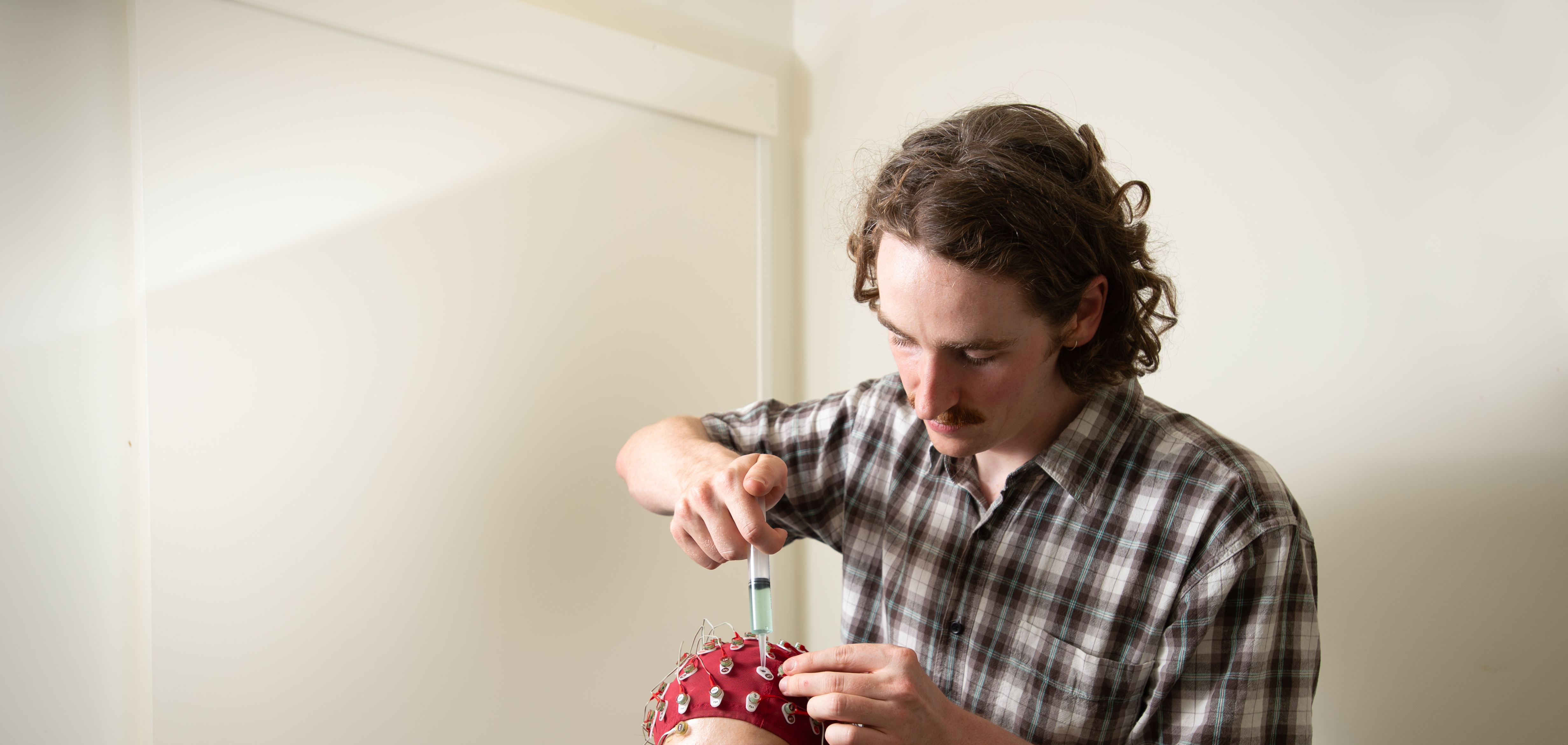Hello! I’m a postdoctoral researcher at Stanford University. My research explores how our brains transform sensory signals (e.g., patterns of light or sound) into abstract meaning (e.g., physical or linguistic understanding), to achieve complex goals like catching a ball or understanding speech. I combine neural recordings, behavioural experiments, and computational modelling, to unravel the neuro-computational mechanisms underlying these fundamental, sensory-guided processes. In my current work, I’m using intracranial neural recordings to study the mechanisms underlying naturalistic speech comprehension.
I work in the Gwilliams Laboratory of Speech Neuroscience at Stanford. Previously I worked in the Timing Lab at QUT & The University of Melbourne, where I investigated the neural mechanisms of visual motion extrapolation. Prior to that I completed my PhD in the Decision Neuroscience Lab at The University of Melbourne, where I investigated perceptual decision making and metacognition [thesis link].

Publications
Turner, Hogendoorn, & Gwilliams (Forthcoming). On the speed of conscious perception: How soon is now? Behavioural and Brain Sciences.
Cottier, Turner, Chae, Holcombe, & Hogendoorn (2025). No evidence that individual alpha frequency (IAF) represents a mechanism underlying motion-position illusions. European Journal of Neuroscience.
Turner, Parvizi, & Gwilliams (2025). Spatiotemporal tracking of phonetic content and probability in the human brain during continuous speech understanding. CCN2025 2-Page Report.
Turner, Kwon, Kim, & Hogendoorn (2025). Rapid Reweighting of Sensory Inputs and Predictions in Visual Perception. Neural Computation.
Turner, Sexton, Johnson, Wilson, & Hogendoorn (2025). Predictable motion is progressively extrapolated across temporally distinct processing stages in the human visual cortex. PLOS Biology.
Melling, Turner, & Hogendoorn (2024). Concurrent perception of competing predictions: a “Split-Stimulus Effect”. Journal of Vision.
Turner, Sexton, & Hogendoorn (2024). Neural mechanisms of visual motion extrapolation. Neuroscience and Biobehavioural Reviews.
Cottier, Turner, Holcombe, & Hogendoorn (2023). Exploring the extent to which shared mechanisms contribute to motion-position illusions. Journal of Vision.
Turner, Blom, & Hogendoorn (2023). Visual information is predictively encoded in occipital alpha/low-beta oscillations. The Journal of Neuroscience.
Turner (2023). Perceiving the probable present. Nature Reviews Psychology.
Ko, Feuerriegel, Turner, Overhoff, Niessen, Stahl, Hester, Fink, Weiss, & Bode (2022). Divergent effects of absolute evidence magnitude on decision accuracy and confidence in perceptual judgements. Cognition.
Turner (2022). Unravelling the neural mechanisms which encode rapid streams of visual input. The Journal of Neuroscience.
Turner, Feuerriegel, Hester & Bode (2022). Initial sensory information biases the likelihood and speed of subsequent changes of mind. PLOS Computational Biology.
Feuerriegel, Jiwa, Turner, Andrejević, Hester, Bode (2021). Tracking dynamic adjustments to decision making and performance monitoring processes in conflict tasks. NeuroImage.
Andrejević, Feuerriegel, Turner, Laham, Bode (2021). How do Basic Personality Traits Map onto Moral Judgements of Fairness-related Actions. Social Psychology and Personality Science.
Turner, Angdias, Feuerriegel, Chong, Hester, & Bode (2021). Perceptual decision confidence is sensitive to foregone effort expenditure. Cognition.
Andrejević, Feuerriegel, Turner, Laham, Bode (2020). Moral Judgements of Fairness-Related Actions are Flexibly Updated to Account for Contextual Information. Scientific Reports.
Turner, Feuerriegel, Andrejević, Hester, & Bode (2020). Perceptual change-of-mind decisions are sensitive to absolute evidence magnitude. Cognitive Psychology.
Turner, Johnston, de Boer, Morawetz, & Bode (2017). Multivariate pattern analysis of event-related potentials predicts the subjective relevance of everyday objects. Consciousness and Cognition.
